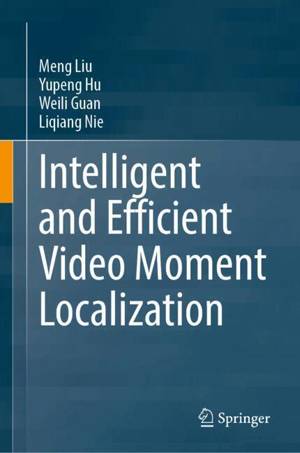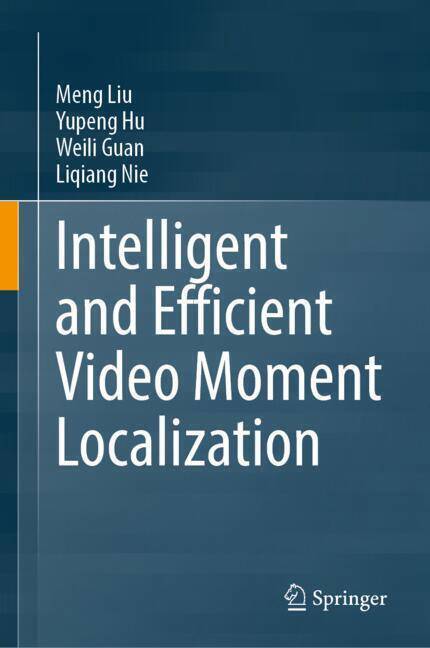
- Afhalen na 1 uur in een winkel met voorraad
- Gratis thuislevering in België vanaf € 30
- Ruim aanbod met 7 miljoen producten
- Afhalen na 1 uur in een winkel met voorraad
- Gratis thuislevering in België vanaf € 30
- Ruim aanbod met 7 miljoen producten
Zoeken
Intelligent and Efficient Video Moment Localization
Meng Liu, Yupeng Hu, Weili Guan, Liqiang Nie
Hardcover | Engels
€ 274,95
+ 549 punten
Omschrijving
This book provides a comprehensive exploration of video moment localization, a rapidly emerging research field focused on enabling precise retrieval of specific moments within untrimmed, unsegmented videos. With the rapid growth of digital content and the rise of video-sharing platforms, users face significant challenges when searching for particular content across vast video archives. This book addresses how video moment localization uses natural language queries to bridge the gap between video content and semantic understanding, offering an intuitive solution for locating specific moments across diverse domains like surveillance, education, and entertainment. This book explores the latest advancements in video moment localization, addressing key issues such as accuracy, efficiency, and scalability. It presents innovative techniques for contextual understanding and cross-modal semantic alignment, including attention mechanisms and dynamic query decomposition. Additionally, the book discusses solutions for enhancing computational efficiency and scalability, such as semantic pruning and efficient hashing, while introducing frameworks for better integration between visual and textual data. It also examines weakly-supervised learning approaches to reduce annotation costs without sacrificing performance. Finally, the book covers real-world applications and offers insights into future research directions.
Specificaties
Betrokkenen
- Auteur(s):
- Uitgeverij:
Inhoud
- Aantal bladzijden:
- 154
- Taal:
- Engels
Eigenschappen
- Productcode (EAN):
- 9783031875878
- Verschijningsdatum:
- 20/06/2025
- Uitvoering:
- Hardcover
- Formaat:
- Genaaid
- Afmetingen:
- 156 mm x 234 mm
- Gewicht:
- 421 g

Alleen bij Standaard Boekhandel
+ 549 punten op je klantenkaart van Standaard Boekhandel
Beoordelingen
We publiceren alleen reviews die voldoen aan de voorwaarden voor reviews. Bekijk onze voorwaarden voor reviews.








